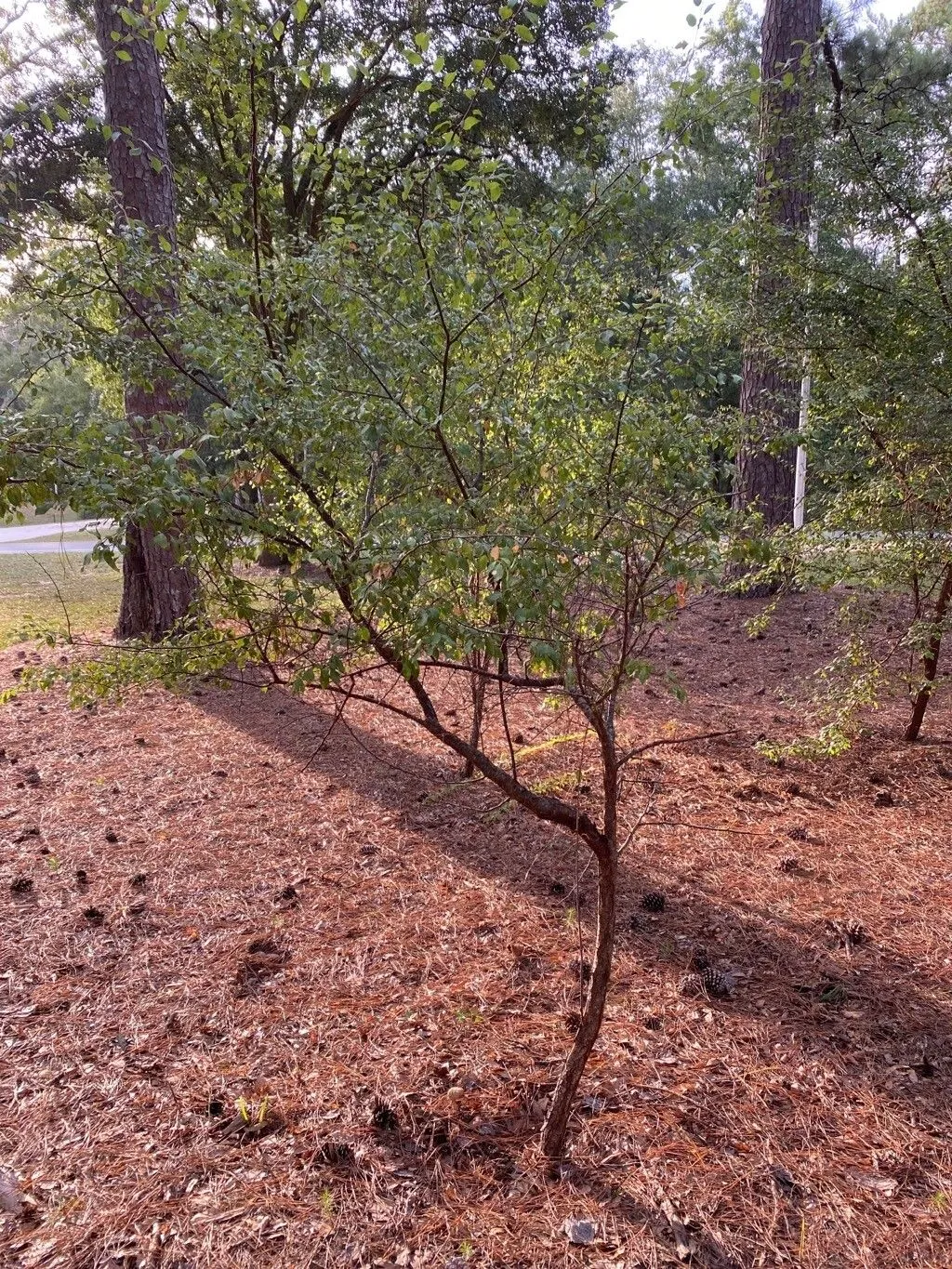
Author: Elliott
Bibliography: Sketch Bot. S. Carolina 1: 541 (1821)
Year: 1821
Status: accepted
Rank: species
Genus: Prunus
Vegetable: False
Observations: E. U.S.A. to Texas
Sloe plum, scientifically known as Prunus umbellata, belongs to the Rosaceae family. This deciduous tree is native to the eastern regions of the United States, extending as far west as Texas. Prunus umbellata was first described in detail by Elliott in “Sketch Botany of South Carolina,” published in 1821.
The sloe plum is renowned for its resilience and adaptability, thriving in a range of soil types from sandy to loamy, and preferring well-drained conditions. Typically, it reaches a height of 10 to 20 feet, bearing a rounded, spreading crown adorned with slender branches. During the blooming season, usually in early spring, the tree is covered with an abundance of small, white flowers that possess a simplistic beauty and a faint, sweet fragrance, attracting pollinators such as bees and butterflies.
As the seasons progress, these flowers give way to the tree’s eponymous fruit: the sloe plum. These plums are small, typically less than an inch in diameter, and transition from green to deep blue or purple as they mature in late summer to early fall. While they can be quite tart when freshly harvested, they are often used in making jellies, jams, and wines, or providing a culinary accent in various recipes.
In addition to its culinary uses, the sloe plum holds value for wildlife, offering sustenance to birds, deer, and other foraging animals. Its dense foliage also provides shelter and nesting sites, enhancing the biodiversity of its habitat.
Beyond its ecological contributions, the sloe plum is also appreciated in traditional medicine. Historically, various parts of the tree such as the bark and roots have been used in folk remedies for their purported health benefits, including anti-inflammatory and astringent properties.
Cultivating Prunus umbellata requires minimal maintenance, making it an attractive option for gardeners and landscape designers seeking a hardy, ornamental tree that supports local wildlife. It can be propagated through seeds or cuttings and tends to exhibit robust growth once established, even in less-than-ideal conditions.
In summary, Prunus umbellata, or sloe plum, is a versatile and valuable tree native to the United States. Its aesthetic appeal, ecological benefits, and practical uses in culinary and traditional medicine underscore its importance and enduring relevance in various landscapes and cultures.
Eng: allegheny plum, flatwoods plum, hog plum, sloe plum
En: Sloe plum, Allegheny plum, Flatwoods plum, Hog plum
Taken Aug 21, 2022 by Juan Francisco Iaconis (cc-by-sa)
Taken Mar 29, 2022 by Ezio Caliari (cc-by-sa)
Taken Feb 14, 2020 by William William (cc-by-sa)
Taken May 25, 2022 by Calissa Desrocher (cc-by-sa)
Taken Mar 26, 2022 by Chris Dennis (cc-by-sa)
Taken Sep 29, 2022 by RIVER STONE (cc-by-sa)
Taken Apr 23, 2020 by William William (cc-by-sa)
Taken Jun 7, 2012 by EOL − Jason Sharp (cc-by-nc-sa)
Taken Sep 18, 2022 by Henrico cappellaio (cc-by-sa)
Taken Sep 29, 2022 by RIVER STONE (cc-by-sa)
Taken Mar 26, 2022 by Chris Dennis (cc-by-sa)
Taken Sep 29, 2022 by RIVER STONE (cc-by-sa)
Taken Jun 7, 2012 by EOL − Jason Sharp (cc-by-nc-sa)
Taken Apr 23, 2020 by William William (cc-by-sa)
Taken Jul 1, 2022 by jean-philippe theron (cc-by-sa)
© copyright of the Board of Trustees of the Royal Botanic Gardens, Kew.
Growth habit>: Tree, Shrub
Family: Myrtaceae Author: (F.Muell.) K.D.Hill & L.A.S.Johnson Bibliography: Telopea 6: 402 (1995) Year: 1995 Status:…
Family: Rubiaceae Author: Pierre ex A.Froehner Bibliography: Notizbl. Bot. Gart. Berlin-Dahlem 1: 237 (1897) Year:…
Family: Sapindaceae Author: Koidz. Bibliography: J. Coll. Sci. Imp. Univ. Tokyo 32(1): 38 (1911) Year:…
Family: Asteraceae Author: A.Gray Bibliography: Pacif. Railr. Rep.: 107 (1857) Year: 1857 Status: accepted Rank:…
Family: Fabaceae Author: Medik. Bibliography: Vorles. Churpfälz. Phys.-Ökon. Ges. 2: 398 (1787) Year: 1787 Status:…
Family: Aspleniaceae Author: (Cav.) Alston Bibliography: Bull. Misc. Inform. Kew 1932: 309 (1932) Year: 1932…